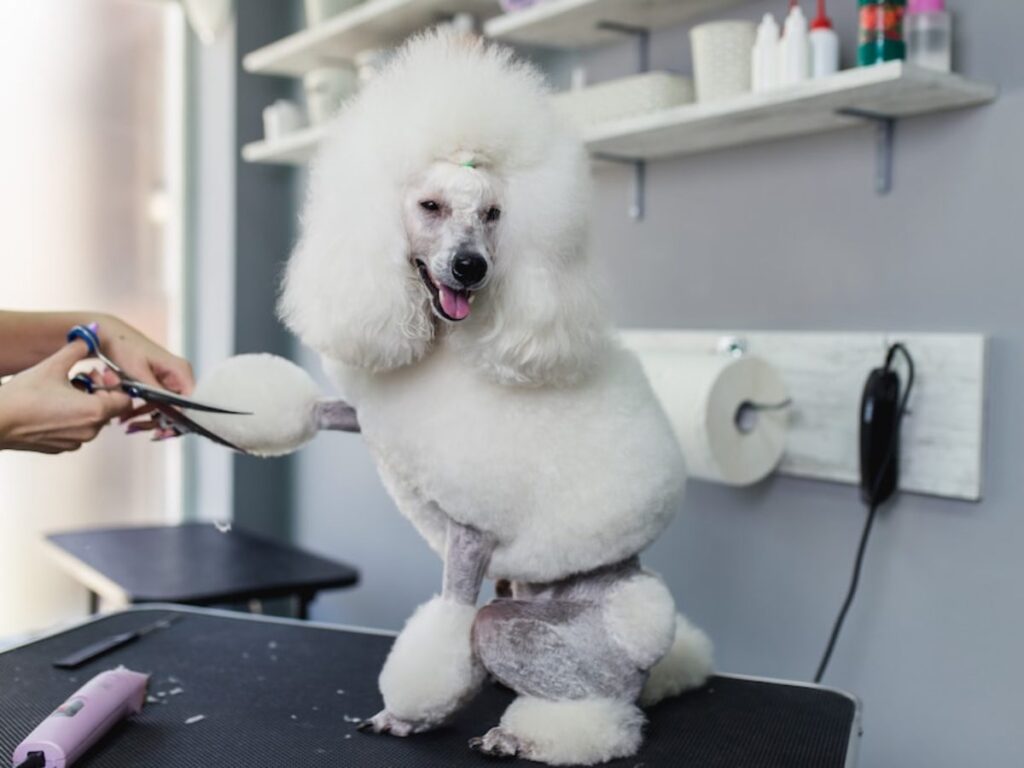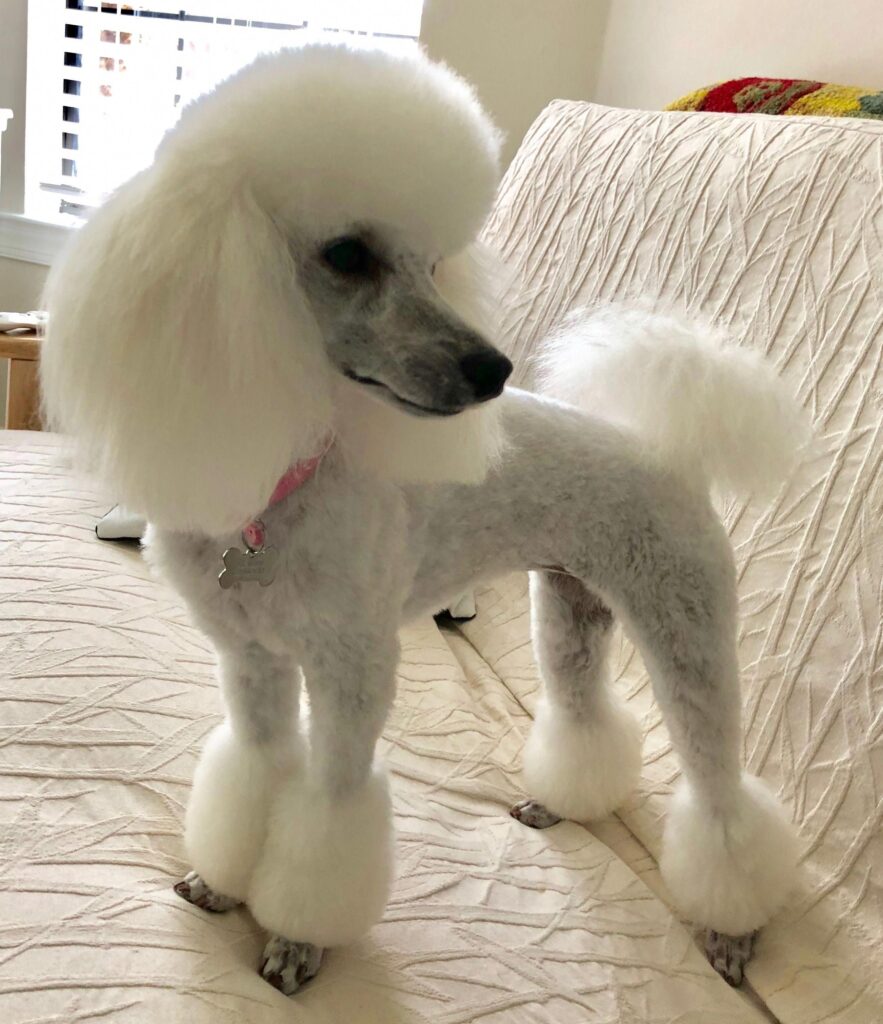Mention a pom-pom in canine circles and one breed comes to mind-the elegant Poodle. While the distinctive hairdo might seem more like a fashion statement than a necessity, the Standard Poodle haircut makes sense once you understand the breed’s history.
Today, Poodle owners generally choose between one of two traditional cuts.” Since a Poodle’s thick outer coat can get heavy when wet, the bottom half of the body was shorn back to help keep the dog afloat. To keep his organs warm in cold waters, the hair had been kept long over the chest and head. Bracelets of ankle hair were left to protect joints from rheumatism, and a topknot was used to maintain long hair out of the eyes when swimming. Colorful bows were added during competitions to help owners identify their dogs. A short history of Poodle grooming will be described below.
Groomed for competition
The range of fancy and experimental Poodle cuts hit a peak during the reign of the French King, Louis XVI, when many dogs were trimmed in decorative styles to match the extravagant coifs of 18th Century French nobility.
Bred as a water retriever in early 17th Century Europe, the Poodle name comes from the German pudel or pudelhund, literally meaning “water dog. The “Continental Clip” leaves a full mantle of hair around the chest and rib cage, pom-poms over each hip and on the tail, ankle and knee bracelets, and fully shaved hindquarters and legs. With the “English Saddle Clip,” a short coat of curly hair is left over the hindquarters and legs.
In competition, adult dogs must be shown in one of these two conforming cuts, which always make Poodles big crowd-pleasers in the show ring.
The new natural
While elaborately coifed Standard Poodles are still the norm, many owners today are choosing to either leave their dogs uncut or leave them in an uniform length, such as a puppy cut. Please note that uncut Poodles are not maintenance free, and the resulting matting can, in some cases, cause significant skin issues.
But whether he’s perfectly pruned or minimally coifed, no other breed has turned heads throughout history like your distinctive Poodle.
By Dog Care Tip




0 Comments